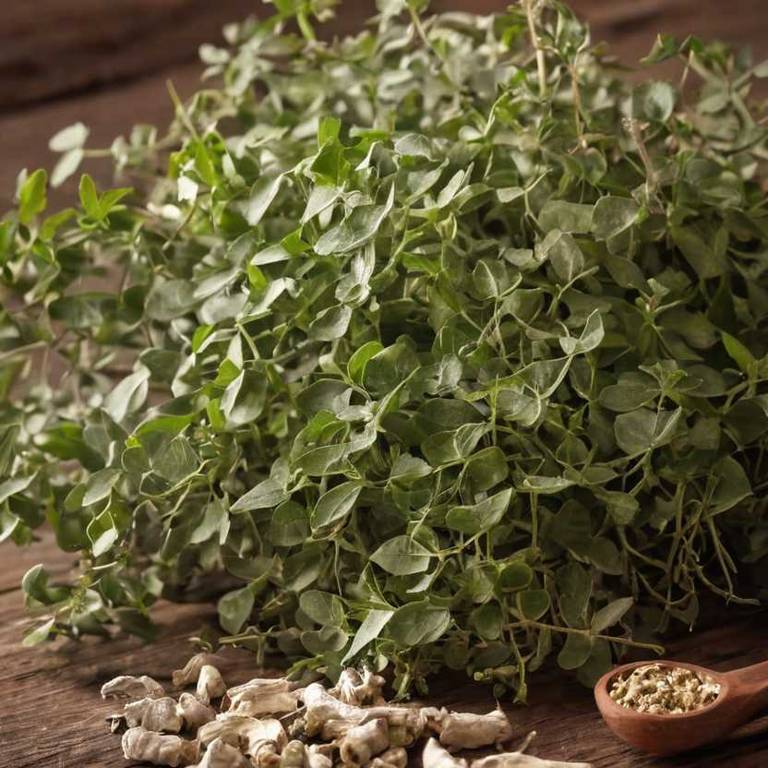By Leen Randell
Updated: Jul 21, 2024
10 Medicinal Constituents Of Commiphora Mukul (Guggul)

Commiphora mukul has active constituents such as gum resin, guggulsterone, and ferulic acid.
These compounds possess anti-inflammatory, antioxidant, and cholesterol-lowering properties, which have been traditionally used to treat various ailments. The constituents in guggul may improve heart health by reducing triglyceride and LDL cholesterol levels, thereby lowering the risk of cardiovascular diseases.
This can significantly improve the quality of life for individuals with heart conditions.
This article explains in details the 10 best active constituents of Commiphora mukul.
1. Beta-boswellic acid
Commiphora mukul beta-boswellic acid is a bioactive compound extracted from the resin of the plant.
It has been traditionally used in Ayurvedic medicine for centuries to treat various health conditions such as arthritis, thyroid disorders, and skin diseases. Beta-boswellic acid has anti-inflammatory properties, which are believed to be responsible for its therapeutic effects.
Research suggests that it may also have antioxidant and immunomodulatory activities, making it a potential treatment option for chronic inflammatory diseases.
2. Α-boswellic acid
Commiphora mukul α-boswellic acid is a bioactive compound isolated from the resin of this plant.
It has been extensively studied for its potential health benefits, including anti-inflammatory, antioxidant, and cholesterol-lowering properties. α-Boswellic acid has been shown to inhibit the production of pro-inflammatory enzymes and molecules, making it a promising treatment option for various inflammatory diseases.
Its ability to regulate lipid metabolism has also led to its use in treating hypercholesterolemia and cardiovascular disease.
3. Pentacyclic triterpenoids
Commiphora mukul pentacyclic triterpenoids is a group of bioactive compounds isolated from the resin of the Commiphora mukul plant.
These compounds have been found to exhibit a range of biological activities, including anti-inflammatory, antioxidant, and lipid-lowering effects.
Pentacyclic triterpenoids from C. mukul have also shown promise in reducing cholesterol levels, improving blood glucose control, and inhibiting the growth of certain cancer cells.
4. 11-keto-β-boswellic acid
Commiphora mukul 11-keto-β-boswellic acid is a bioactive compound extracted from the sap of the Commiphora mukul tree.
It has been traditionally used in Ayurvedic medicine for centuries to treat various ailments, including high cholesterol and obesity.
Recent studies have shed light on its potent anti-inflammatory and antioxidant properties, making it a promising natural remedy for various diseases, including arthritis and cancer.
5. 3α-hydroxy-ursolic acid
Commiphora mukul 3α-hydroxy-ursolic acid is a bioactive compound isolated from the resin of the Commiphora mukul tree.
It has been traditionally used in Ayurvedic medicine for its various health benefits, including treating hyperlipidemia, cardiovascular disease, and inflammation.
This compound exhibits potent antioxidant and anti-inflammatory properties, making it a promising natural agent for the prevention and treatment of chronic diseases.
6. Ursolic acid
Commiphora mukul ursolic acid is a bioactive compound derived from the sap of the Commiphora mukul tree.
It has been used in traditional Ayurvedic medicine for centuries to treat various ailments, including cardiovascular and inflammatory diseases. Ursolic acid has been shown to exhibit potent anti-inflammatory and antioxidant properties, making it a promising natural treatment for conditions such as arthritis, diabetes, and cancer.
Its potential therapeutic benefits are being extensively studied and researched.
7. Oleanolic acid
Commiphora mukul oleanolic acid is a pentacyclic triterpenoid compound found in the resin of the plant.
This bioactive compound has been extensively studied for its potential therapeutic benefits, including anti-inflammatory, antioxidant, and antimicrobial properties.
Oleanolic acid has been shown to exhibit protective effects against various diseases, such as cardiovascular disorders, cancer, and viral infections, making it a promising natural remedy with significant medicinal value.
8. Betulinic acid
Commiphora mukul betulinic acid is a bioactive compound extracted from the resin of this plant.
This natural product has been widely studied for its potential anti-inflammatory and antimicrobial properties. Research suggests that betulinic acid may have applications in treating various diseases, including cancer, cardiovascular disorders, and viral infections.
Its unique molecular structure makes it an attractive target for further exploration and development as a therapeutic agent.
9. Lupeol
Commiphora mukul lupeol is a triterpenoid compound extracted from the resin of the plant Commiphora mukul.
It has been used in traditional Ayurvedic medicine for centuries to treat various health issues, including hyperlipidemia, arthritis, and cardiovascular diseases.
Lupeol has been shown to possess anti-inflammatory, antioxidant, and lipid-lowering properties, making it a potential therapeutic agent for the management of metabolic disorders.
10. Β-amyrin
Commiphora mukul β-amyrin is a pentacyclic triterpenoid compound derived from the sap of the Commiphora mukul tree.
It has been used in traditional Ayurvedic medicine for centuries to treat various health conditions, including hypercholesterolemia and atherosclerosis.
β-Amyrin has been shown to have anti-inflammatory, antioxidant, and lipid-lowering properties, making it a promising compound for the prevention and treatment of cardiovascular diseases.